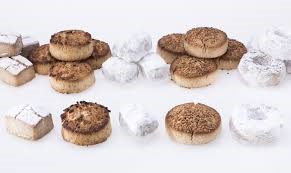Málaga is the birthplace of Picasso and Antonio Banderas, and the second largest town of Andalusia. What is your first association? Malagueña, and the question whose classical guitar rendition of this flamenco song is the best? Will you ponder the reasons for the name of Buñuel’s first film, An Andalusian Dog? Recall the run-away bride from Lorca’s Blood Wedding, or Goytisolo’s poignant descriptions of his travels through Andalusia?
Football fans will surely think of the football player Juanito, born in the Province of Málaga, and still considered to represent the spirit of Real Madrid. His fierce temperament earned him numerous suspensions and even a bottle in the head in the 1978 FIFA World Cup qualifier in Belgrade!
But let’s face it: when we hear the name “Málaga”, the majority of us will be thinking sunshine, magnificent beaches, and Málaga wine.
A long history of wine…
DO Málaga is a protected designation of origin for a variety of (mostly) sweet white wines produced in the Province of Málaga, a region where wine-making commenced over 3000 years ago, in the time of the Phoenicians. The designation covers wines produced principally from the white grape varieties Moscatel and Pedro Ximénez.
According to its specification, protection of this designation of origin officially dates from 1932, under the Spanish Law on Wine. Along with Sherry, protected under the DO Jerez, the sweet Málaga wines are renowned Spanish desert wines; so much so that, reportedly, Catherine the Great banned taxes on any Málaga wines arriving in Russia.
Today the wines are produced by nearly 80 producers in the region, where around 75% of the products are consumed domestically and around 25% exported, mostly to the USA, Poland, UAE, Brazil and France. The other two designations of origin of this province are DO Sierras de Málaga (white, red and rosé wine), and DO Pasas de Málaga, which refers to wine made from raisins.
The area of production is the Province of Málaga, composed of 67 municipalities situated in five different geographical areas (see map).

Area of production of the DO “Málaga”
According to Jorge Ordoñez Selections: “The vineyards of Málaga are perhaps the most extreme and dangerous in Europe, due to the decomposed slate soils, and inclines of up to 70°. The vast majority of steep vineyards in Europe have terraces or are mechanized in some way to protect workers and assist with harvest. The vineyards in Málaga have remained untouched. All pruning and harvesting is done by hand, and mules carry six 15kg boxes up the slopes at a time. An absolutely heroic form of viticulture.”
…and something to have with it
If the name “Málaga” makes you think of wine, the next step is to think about food. According to the producers, the best way to enjoy Málaga wine is with blue cheeses, foie, fruits and sweets, including the well-known mantecados and polvorones of Estepa and Antequerra.
These two towns in the Málaga region are in competition with each other as to where these Christmas delicacies originated:

Mantecados and polvorones
But for the writer of these lines, the very first association for “Málaga” is ice-cream, as it was the favourite ice-cream flavour of her father.
As always, the above is brought to you by the MARQUES GI Team, which wonders: what do you think of, when you say “Málaga”?
This article was prepared by Marijana Kozakijevic of Mikijelj Jankovic & Bogdanovic, a member of the GI Team
 Issue 086
Issue 086
 Issue 086
Issue 086